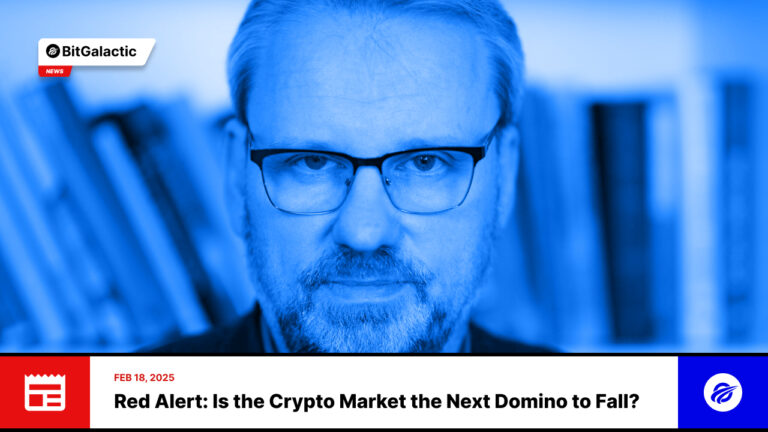Red Alert: Is the Crypto Market the Next Domino to Fall?
In 2008, financial columnist Wolfgang Münchau was among the few voices who foresaw the Global Financial Crisis. Now, he’s sounding the alarm again, warning that we are in the midst of a massive financial bubble—and this time, crypto could be a key trigger.
The Signs of a Bubble Are Everywhere
Historically, financial bubbles form when unconventional financial instruments emerge alongside narratives of “this time is different.” Investors underestimate macroeconomic risks while markets display irrational exuberance. The dot-com boom and the 2008 financial crisis were classic examples, and according to Münchau, today’s markets are showing similar patterns.
One of the biggest warning signs is the explosive rise of crypto assets, particularly memecoins, which currently have a combined market cap of approximately $80 billion. Dogecoin alone accounts for nearly half of that, while other speculative assets, such as Trump-linked tokens, are thriving on hype rather than fundamental value.
BitGalactic has previously warned about the inherent risks of the memecoin market, highlighting how social media influence creates artificial demand that often ends in a sudden price collapse. The recent LIBRA token crash, which led to a major dip in Argentina’s stock market, serves as a stark reminder that crypto volatility has real-world consequences.
Stablecoins: The Bigger Contagion Risk?
Beyond memecoins, another looming threat is the stablecoin market, valued at $225 billion. While stablecoins have a legitimate financial use case, they are heavily dependent on short-term U.S. Treasuries. If inflation rises and the Federal Reserve increases interest rates, the value of these reserves could plummet, triggering a liquidity crisis similar to the 1994 bond market collapse.
BitGalactic analysts have noted that stablecoins could be the “weak link” in the crypto ecosystem. Unlike previous financial crises that were limited to traditional banking, a stablecoin meltdown could create a ripple effect across the broader crypto space, leading to exchange failures, mass liquidations, and regulatory crackdowns.
Stock Market Parallels to the Dot-Com Era
Another major warning sign is the U.S. stock market. The CAPE ratio (cyclically adjusted price-to-earnings) for the S&P 500 is nearing all-time highs, approaching levels last seen before the dot-com crash. AI-related stocks, in particular, are trading at extreme valuations, leading some analysts to question whether companies like Nvidia are the “AltaVista” of this generation—a once-dominant player that could be displaced by new, unforeseen competitors.
BitGalactic has long argued that while AI is transformative, the real winners will likely be companies that leverage AI for productivity gains rather than the firms supplying the underlying technology. If AI stock valuations collapse, it could trigger a broader market selloff, further exacerbating financial instability.
The Catalyst for Collapse
While it’s impossible to predict exactly what will spark the next crisis, Münchau believes a combination of factors could set off a domino effect. A trade war, excessive deregulation, or even a poorly executed tax policy under the Trump administration could act as the tipping point.
BitGalactic analysts agree that the crypto industry could face a severe reckoning if inflation surges and regulatory oversight weakens. SEC Commissioner Hester Peirce has already signaled that looser regulation could come at a cost—investors shouldn’t expect “Mama government” to bail them out when things go south.
The Perfect Storm?
The real danger isn’t just in one sector collapsing—it’s in how these crises could interconnect. A bond market shock could lead to a stablecoin meltdown, which in turn could shake investor confidence in crypto, tech stocks, and even traditional equities. This cascading effect mirrors what happened in 2008, and it’s why Münchau believes the financial world should brace for impact.
BitGalactic’s final takeaway? While opportunities in crypto remain, investors must navigate the market with caution. Risk management and diversified strategies are more critical than ever in an era where financial bubbles are interconnected like never before.
The question is no longer if a collapse will happen—it’s when.
Share this post


